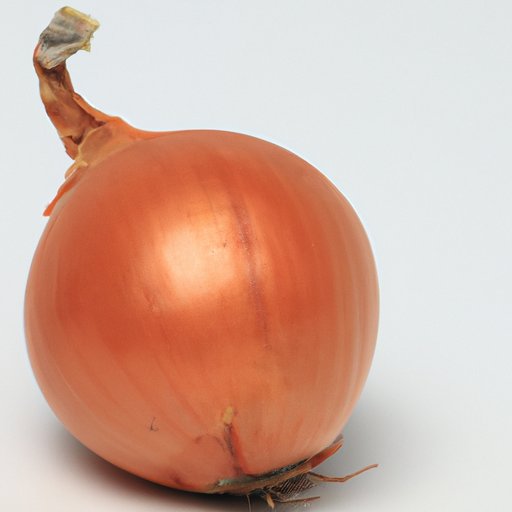
I. Introduction
Onions are a staple ingredient in many households, from adding flavor to soups and stews to being a crucial element in fresh salads. However, as with any perishable item, onions can go bad, and it’s essential to identify when they are no longer suitable for consumption before including them in your meals. In this article, we’ll explore the different ways to tell if an onion is bad, from using your senses to identifying signs of mold and spoilage.
II. Using Senses
One of the easiest ways to tell if an onion is bad is by using your senses. The first sense to use is sight. Take a close look at the onion’s physical appearance, as a fresh onion should be firm, dry, and have a papery outer layer. If you notice any soft spots or bruises, it’s a sign that the onion is no longer fresh and safe to consume. Also, check the onion’s color, as a fresh onion should have a light brown color and a glossy appearance.
The next sense to use is smell. Give the onion a good sniff, as a fresh onion should have a slightly sweet and pungent smell. A bad onion, on the other hand, will have a sour or moldy smell, indicating that it’s no longer fresh and safe to use.
Finally, touch the onion. If it’s slimy or wet to the touch, it’s a sign that it’s no longer fresh and has started to rot. A fresh onion should be firm and have a dry outer layer.
III. Age of Onion
The age of an onion is another essential factor that influences its freshness and quality. A freshly harvested onion will last longer than one that has been stored for a while. To identify an old onion that’s no longer suitable for consumption, check for changes in texture, color, and overall appearance. An older onion may have a softer texture and a yellow or green tinge, indicating that it’s no longer fresh.
IV. Softness
Over time, a bad onion may become soft or mushy. To check for this, gently press the onion. If it feels soft or squishy, it’s a sign that it’s no longer fresh and safe to use. Additionally, a discoloration may appear, typically in the form of dark or brownish spots on the onion’s outer layer, indicating that it’s gone bad.
V. Signs of Mold
Mold is a common problem when it comes to onions that have been exposed to moisture. To identify a moldy onion, look for a fuzzy texture that usually emerges on the surface. Moldy onions are no longer fresh and safe to use and should be thrown away immediately.
VI. Taste
Another way to identify a bad onion is by its unusual taste or bitter aftertaste. While it’s not recommended to taste a raw onion, you can test its taste by biting off a tiny piece and chewing it. If the onion tastes bitter or has an unusual taste, it’s a sign that it’s no longer fresh and safe to use.
VII. Storage
Improper storage can cause onions to spoil quickly, so it’s essential to know how to store them correctly. Keep onions in a cool, dry place with good ventilation, such as a pantry or a cellar. Avoid storing onions near potatoes or other root vegetables, as they can release moisture and cause the onions to spoil quickly. You can also store onions in a mesh bag or a cardboard box, allowing air to circulate and prevent moisture buildup.
VIII. Conclusion
Now that you know the different ways to tell if an onion is bad, you can ensure that your meals are fresh and safe to consume. Remember to use your senses, check for signs of mold, and store onions correctly to extend their lifespan and prevent spoilage. If you’re still unsure about whether an onion is fresh or not, it’s better to err on the side of caution and discard it.




